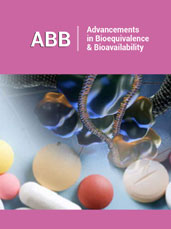- Submissions

Full Text
Advancements in Bioequivalence & Bioavailability
Language Barrier before You in TCM and Acupuncture Learning
Tong Zheng Hong*
National University of Health Sciences in IL, Taiwan
*Corresponding author: Tong Zheng Hong, MS in Acupuncture, National University of Health Sciences in IL, 9, 188 Lane, Southeast St. Hsinchu City 30062, Taiwan
Submission: May 17, 2018; Published: June 12, 2018

ISSN 2640-9275Volume1 Issue3
Introduction
Cultural decoding has been a focus in many fields. There is no doubt, to some extents, that cultural decoding relies mostly on words. It is accepted that “word-for-word” literal translation method is the way paraphrasing the accurate lexical meaning. However, this cannot be applied to Traditional Chinese medicine and acupuncture learning.
Xu Shen (許慎, 58 – 148 CE), Chinese scholar-official and philologist of the Eastern Han Dynasty (25-189), were the author of Shuowen Iiezi (說文解字, Explaining Graphs and Analyzing Characters). In this book, the author provided the information on the development and historical usage of Chinese characters and reported there were a total of 9,353 characters. At that time, the Shanghanlun (傷寒論, Treatise on Cold Damage Disorders) was the first systematic Chinese medical treatise in the Chinese medicine compiled by Zhang Zhongjing (張仲景, 150-219 CE) in the same dynasty.
Confusing Examples
With the popularity of TCM and acupuncture, language barrier needs learners ‘attention. The fact in the West at present is that not all of the TCM and acupuncture classics are translated into English. Correct translation requires good translators excellent in both Chinese and English. In addition to the good command of these two languages, the meanings of the characters used in the ancient time may be different from those at the present time, which may confuse and frustrate readers.
Chinese characters are called ideographs with three features of forms, sounds and meanings. They are different from alphabet languages which only represent forms and sounds [1]. The difficulties in understanding Chinese characters in TCM can be identified in the following ways:
A. Simplified Chinese is widely used all over the world; however, traditional Chinese is accepted and used in Taiwan, Hong Kong, and Macao. For example, 黃帝內“經” in simplified Chinese is 黄帝内“经” in writing.
B. Pronunciation changed with usage. “能” refers to “can” in English and is correctly pronounced neng in the modern Chinese. However, this character in Huang Di Nei Jing (黃帝內 經, Yellow Emperor’s Inner Classic) means “state (態)” and the pronunciation is tai. This condition occurs when the characters were not enough for use in the ancient time.
C. “內” can be used either as a verb or a noun. It is pronounced na (equals 納) when used as verb and née when used as a noun referring to “inner” or “inside” in the modern use.
D. “平” is pronounced pin when it is related to an adjective “flat” in English. With writing mistakes, the pronunciation of this character is bian when it is used as a verb “distinguish” in medical Chinese.
E. Different characters bear the identical meanings. “输”, “ 输”, and “腧” are different characters referring to the identical meaning of acupoint, and are all pronounced shu.
F. Another common confusing example is combined term like神情. In this term, shen 神may mean spirit, and情 qing, affect, but 神情accurately meansexpression with the same pronunciation shenqing [2].
Discussion
Having a good command of Chinese plays a key role to learning and mastering TCM and acupuncture. Unfortunately, it is not easy at all for the Western learners to make a right decision when it comes to learning traditional or simplified Chinese characters. The debate on traditional Chinese characters and simplified Chinese characters has been an ongoing dispute concerning Chinese orthography among users of Chinese characters for years with the establishment of the People’s Republic of China (PRC).
Looking back at the history of Chinese medicine, all of the great classics are written in traditional Chinese. This fact may give the learners the right direction that learning traditional Chinese enable the Western learners to acquire more profound knowledge of TCM and acupuncture. On the other hand, it is worried when there is not any Chinese medical terminology curriculum offered in the West. It is believed that “English-word-for-Chinese-character” translation hinders learners from acquiring accurate understanding and the correct spirit of Chinese medicine and acupuncture
Conclusion
Only accurate decoding of Chinese characters can reflect Chinese medical concepts accurately. It is strongly suggested that traditional Chinese characters needs to be considered for Western TCM and acupuncture learners who are willing to really explore the beauty of TCM and acupuncture.
References
- Bears House Knowing character codes of Chinese characters.
- Zhu-fan X, Paul W (2005) Comments on nigel wiseman’sa practical dictionary of Chinese medicine (i) -on the “word-for-word” literal approach to translation. Chinese Journal of Integrative Medicine 11(4): 305-308.
© 2018 Tong Zheng Hong This is an open access article distributed under the terms of the Creative Commons Attribution License , which permits unrestricted use, distribution, and build upon your work non-commercially.
 a Creative Commons Attribution 4.0 International License. Based on a work at www.crimsonpublishers.com.
Best viewed in
a Creative Commons Attribution 4.0 International License. Based on a work at www.crimsonpublishers.com.
Best viewed in 







.jpg)






























 Editorial Board Registrations
Editorial Board Registrations Submit your Article
Submit your Article Refer a Friend
Refer a Friend Advertise With Us
Advertise With Us
.jpg)






.jpg)














.bmp)
.jpg)
.png)
.jpg)










.jpg)






.png)

.png)



.png)






